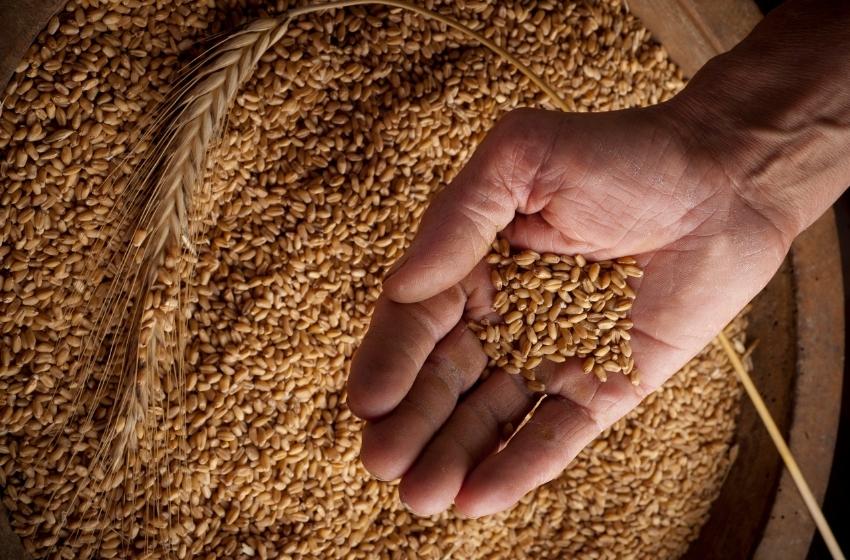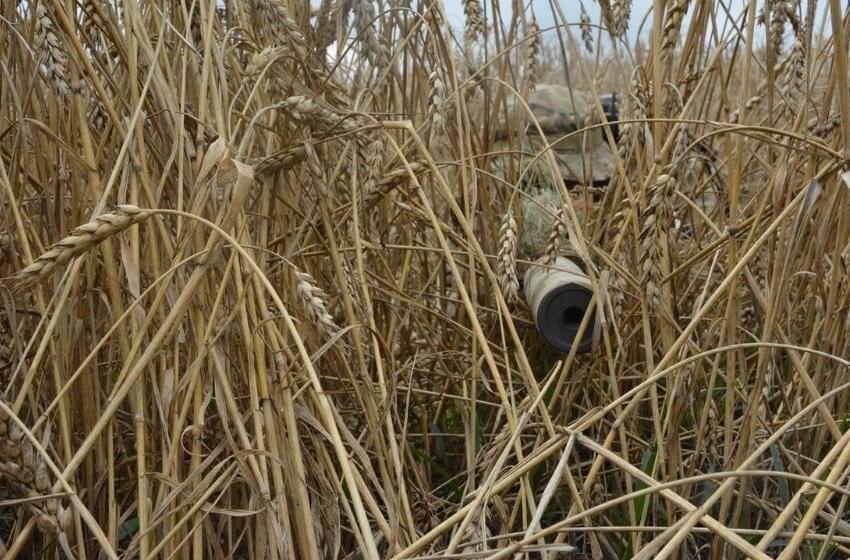Source: Delo
Since the beginning of the war in Ukraine, the agricultural sector has faced a number of problems. Occupation of territories and lands where farmers grow crops, theft of grain and its export from the territory of Ukraine, seaports are blocked, elevators, farms, machinery and fires in the fields are destroyed. However, farmers continue to work, because Ukraine must grow crops for domestic consumption and the international market, which depends on Ukrainian grain. First Deputy Minister of Agrarian Policy and Food Taras Vysotsky spoke about the agro-industrial complex's work and the war's challenges.
Taras, how much grain can Ukrainian farmers harvest this marketing year? Will there be a record harvest of some kind of agriculture?
In a war, it isn't easy to count on record harvests. The war continues and a significant part of the territories was not sown - 25%. Therefore, it is impossible to beat last year's record.
We can harvest about 67 million tons of grains and oilseeds: 52 and 15 million tons, according to preliminary estimates. As for grains, we expect almost 5 million tons of barley, 19 million tons of wheat, 25 million tons of corn, and the rest - other grains. As for oilseeds, it will be about 3 million tons of rapeseed and 9 million tons of sunflower. We will understand regrding soybeans and corn in the fall because their collection has not yet begun.
A few months ago, Ukrainians faced a shortage of buckwheat, and there were mostly imported cereals on store shelves. What buckwheat harvest do you expect this year and will it be enough for domestic consumption?
Indeed, there was an import of buckwheat from Kazakhstan, which stopped at the end of February. Farmers responded to the shortage and sowed 1.5 times more buckwheat. If earlier they sowed 70,000 hectares, now they sow 120,000 hectares. In the coming years, we will also grow more buckwheat. And it will be more than enough for domestic consumption. Therefore, from October-November, consumers will see our buckwheat in stores at a lower price than now.
The State Emergency Service reported that they would not be able to clear all the fields before the start of harvesting. How much will you lose the harvest due to mining?
Our monitoring showed that due to mining in the de-occupied areas, we could not sow about 250 thousand hectares, which is about 1 million tons of crops.
What share of agribusiness has Ukraine lost due to the temporary occupation of Ukrainian territories?
An average of 25%.
Has the grain farmers will harvest this marketing year already been contracted for?
Now there is no active forward contract for future grain, because there are problems with logistics. Most of the contracts are spot contracts, that is, in fact: when the goods were delivered, then they received the money.
The first ships with Ukrainian grain began to depart from Ukrainian ports. Infrastructure Minister Oleksandr Kubrakov noted that they planned to export 3 million tons or more of agricultural products monthly from Ukrainian ports. Is this a sufficient amount of agricultural exports?
In July, we exported almost 3 million tons by rail and road. Exports from ports began in August. To get into balance, you need to export 5-6 million tons every month along all routes.
As of mid-August, 570,000 tons of crops were exported by sea. By the end of August, we can reach up to 1 million tons and potentially increase volumes by 1 million tons every month. That is, from November, we can export 3 million tons by sea, and taking into account other routes - up to 6 million tons per month.
Is it profitable for Ukraine to attract other transport besides sea transport for export?
There is an international price for grains, the amount countries are willing to pay. We subtract the amount of logistics from it. Of course, different types of transport cost differently, but the price does not differ dramatically. Usually, export methods correlate with each other. It is not important for a farmer which way to export, the price is important for him.
Sea transport has always been cheaper, slightly more expensive rail transport, and the most expensive road transport. Before the ports release, we exported by the river, rail, and road transport. Now maritime transport will make logistics cheaper. In addition, the cost of exports via other routes will also become cheaper. Consequently, the price that the farmer will receive when exporting will increase.
Is it possible to take everything out in time for 120 days, as stipulated in the signed agreement on the safe export of grain by sea?
The agreement stipulates 120 days with the possibility of automatic prolongation for another 120 days. So if all parties agree, we can export 240 days. But we still need all routes to work all year round. We have large volumes, therefore all logistics must work constantly. The main thing is to start and involve international partners so that everything works stably.
How much money will the state receive if all the grain can be exported?
That's over $20 billion a year.
Which countries have we already managed to export grain?
Before the war, the distribution was as follows: 35% - the European Union, 40% - Southeast Asia, including China and India, and 25% - the Middle East and North Africa. After the restoration of logistics, this distribution will be the same because these regions are the consumers of our products.
We need a win so we can increase production and exports. There is a demand for Ukrainian products and it will increase because the number of people in the world is growing. We are not tied to certain countries, so if someone refuses our products, someone else will buy them.
There is a drought in EU countries. Can we meet their needs due to crop shortages?
For domestic consumption, Ukraine needs 18 million tons of grain and 2 million tons of oilseeds. That is, we need 20 million tons, and we can export the rest, about 47 million tons of new crop. Therefore, we can close the needs of the EU.
Can such a drought be in Ukraine?
Fortunately, there are no critical droughts this year, but in the northwest, such risks increase yearly. And we understand that it is necessary to restore the development of irrigation. Most of the land may be in a risk zone, where it is impossible to produce agriculture without irrigation.
How many granaries were destroyed by the occupiers?
About 1.5 million grains were stored in the occupied territories, of which they stole 530 tons. The storage volume of elevators destroyed during the shelling was approximately 600-700 thousand tons, but at that time, they were not completely filled.
Is there a shortage of grain storage capacity?
Now there is no shortage of granaries, but due to the halt in the export of last year's grain, and there will be new grain, there will be more products and it needs to be stored somewhere.
It is pointless to build large stationary elevators, first, you need to end the war. But temporary modules will solve the problem. Thanks to Canada and Japan, which provided us with $40 and $17 million, respectively, we have already purchased this equipment through FAO to store grain during the war.
Is there a risk that the theft of Ukrainian grain in the temporarily occupied territories could lead to famine in these regions?
It all depends on the scale of the kidnapping and the situation at the front. Harvesting is taking place in these territories, so there should be enough grain for consumption. But if the invaders take everything out, of course, there will be famine. We hope for a speedy de-occupation of these regions.
To which countries does Russia export Ukrainian agriculture?
According to satellite images, it was determined that the grain was being sold to Syria. Ukraine severed diplomatic relations with her. Unfortunately, this country does not hesitate to buy stolen grain from the aggressor.
Lawyers say that now Ukraine cannot punish Russia for stealing grain. The most that can be done is to record the crimes. How will Ukraine hold the occupiers accountable?
Farmers in the temporarily occupied territories must definitely inform the state authorities about the theft. Now specialists from various departments are developing a procedure for punishing invaders for stealing Ukrainian agricultural products.
What problems do farmers come to you lately?
First, they are concerned about the price of products that are directly related to logistics. Second the issue of booking workers to continue their activities. Thirdly, there are opportunities to compensate for broken equipment, livestock, etc.
Farmers complain that it is impossible to fulfill all the conditions to participate in the E-robota grant program. For example, the Sady Pobedy agricultural complex cannot find a land plot on the territory of its community that would meet the requirements. And for a greenhouse complex on 2 hectares, a maximum of 18-20 employees is required, but not 40, as indicated in the terms of the grant. Can you comment on this?
To support the planting of new gardens, the Ministry of Agrarian Policy made positive decisions on 18 grants worth over UAH 63 million. There are no restrictions regarding land plots, but a logical and understandable order of use should exist. I would recommend changing the community and purpose of the land and making these changes to the document. That is, everything must be done correctly so that the inspector does not issue fines. And the fact that we have already issued so many grants suggests no restrictions.
Regarding greenhouses. Indeed, we have received a lot of requests about the need to reduce the number of mandatory employees from 40 to 25 people. In the fall, we plan to submit the relevant changes to the government for consideration, informing the applicants of the results. If other justified requests are received regarding the adjustment of the conditions of the program, we will consider and give feedback to the applicants.
In your opinion, what laws should be adopted by the Verkhovna Rada in the agricultural sector in the near future?
We have identified three blocks. The first is European integration. Dozens of bills have already been registered and will be considered by the parliament. The second direction is improving land relations to use the land as efficiently as possible. And the third block is aquaculture and fisheries. We need reforms and investments to develop this direction.





















